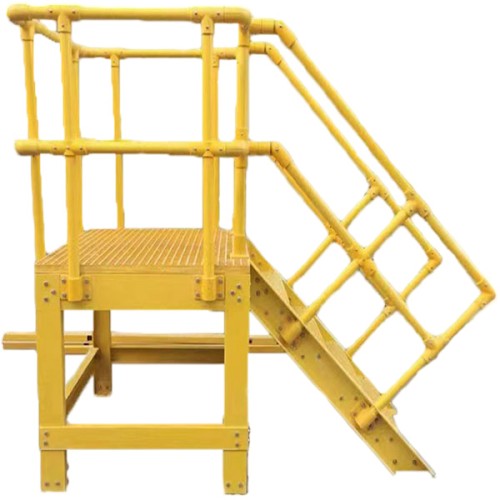Fiberglass Platform: Definition, Applications, and Advantages
A Fiberglass Platform, also known as an FRP (Fiberglass Reinforced Plastic) platform, is a lightweight, corrosion-resistant structure widely used in industrial, marine, and commercial settings. Engineered with fiberglass grating systems and pultruded profiles, these platforms provide durable, non-conductive solutions for walkways, access systems, and maintenance staging. Unlike traditional materials like steel or wood, fiberglass platforms excel in harsh environments due to their resistance to rust, chemicals, and UV degradation.
Manufacturing Process of Fiberglass Walkway Systems
The production of fiberglass platforms involves molding composite materials—combining resin matrices with glass fibers—under controlled conditions. Manufacturers use open-mold or pultrusion techniques to create grating panels, handrails, and support structures. This process ensures uniform strength-to-weight ratios, making platforms like fiberglass access walkways ideal for heavy-load applications. Customizable dimensions (e.g., thickness, mesh size) and anti-slip surfaces further enhance safety and adaptability.
Classifications and Specifications of FRP Platforms
Fiberglass platforms are categorized by design and application:
- Industrial Fiberglass Platforms: Designed for chemical plants, oil refineries, and wastewater facilities.
- Marine-Grade FRP Decking: Resists saltwater corrosion for docks and offshore installations.
- Electrical Non-Conductive Platforms: Safeguard workers in substations or high-voltage areas.
Standard specifications include load capacities (up to 5,000 lbs/ft²), panel thicknesses (1" to 2"), and surface textures (grit-coated or smooth).
Fiberglass vs. Steel or Wooden Platforms: Key Comparisons
Fiberglass access platforms outperform steel and wood in multiple ways:
- Durability: No rust or rot, unlike steel grating or wooden planks.
- Weight: 75% lighter than steel, reducing installation costs.
- Maintenance: No painting or sealing required, unlike wood.
- Safety: Non-sparking and non-conductive, critical for hazardous environments.
Applications of Composite Maintenance Platforms
From industrial catwalks to electrical service platforms, fiberglass walkway systems serve diverse sectors:
- Chemical Processing: Withstands acid spills and fumes.
- Telecommunications: Non-conductive platforms for tower maintenance.
- Water Treatment: Immune to chlorine and moisture damage.
- Transportation: Lightweight bridge decking for pedestrian pathways.
Installing Fiberglass Grating Walkways
Installation involves securing pre-fabricated panels to steel or fiberglass supports using corrosion-resistant clamps or bolts. Modular designs allow rapid assembly, minimizing downtime. For elevated platforms, integrate guardrails and toe boards compliant with OSHA standards. Regular inspections ensure long-term performance, though fiberglass requires far less upkeep than alternatives.
By prioritizing innovation and adaptability, fiberglass platforms redefine modern infrastructure. Whether you need corrosion-resistant walkways, non-conductive staging, or lightweight industrial flooring, FRP solutions deliver unmatched reliability. Explore our catalog to find the perfect fiberglass platform for your project.

